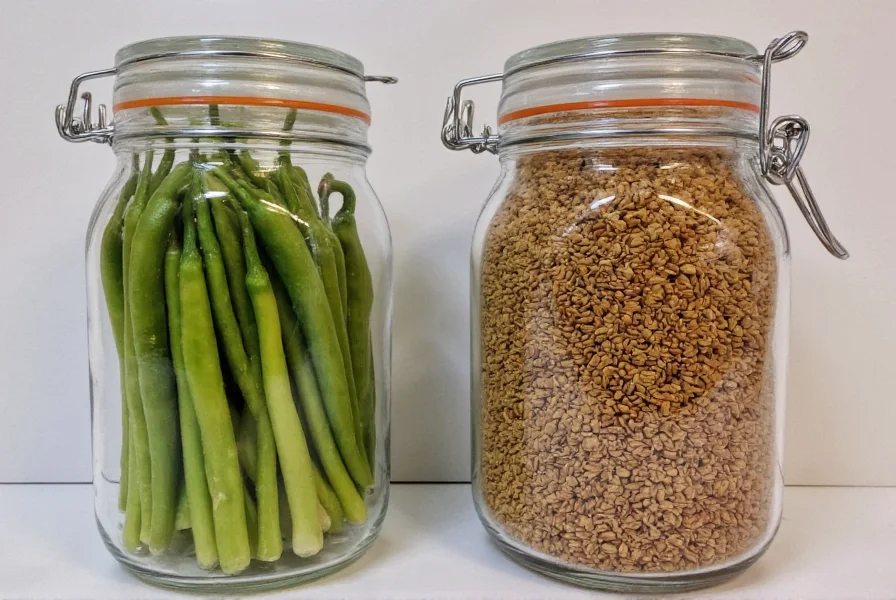Long pepper spice has been prized since ancient times, predating black pepper in global trade routes. This slender, catkin-like spice comes from the Piper longum plant native to India and Southeast Asia. While black pepper dominated Western kitchens for centuries, long pepper is experiencing a culinary renaissance among chefs seeking nuanced heat and historical authenticity.
Historical Significance of Long Pepper
Traced back to 1500 BCE in Indian Ayurvedic texts, long pepper was more valuable than gold in medieval Europe. Roman gourmand Apicius featured it prominently in De Re Coquinaria, and it appeared in nearly 80% of recipes in the 14th-century Forme of Cury. The spice lost prominence when Vasco da Gama discovered sea routes to black pepper sources, making the more abundant black pepper economically favorable.

Botanical Characteristics
Long pepper develops as a spike (catkin) containing dozens of tiny berries. When harvested young and dried, these spikes become the familiar brownish-black spice. The plant thrives in tropical climates, requiring specific humidity and temperature conditions that limit commercial cultivation primarily to India, Indonesia, and Nepal.
Flavor Profile Comparison
Understanding long pepper vs black pepper reveals key differences:
| Characteristic | Long Pepper | Black Pepper |
|---|---|---|
| Heat Level | Moderate, building slowly | Sharp, immediate heat |
| Flavor Notes | Cinnamon, nutmeg, citrus, earthy sweetness | Pungent, woody, floral |
| Aftertaste | Warm, lingering | Brief, fading quickly |
| Best Used In | Slow-cooked dishes, baked goods, spice blends | Finishing dishes, quick cooking |
Culinary Applications
Mastering how to use long pepper in cooking requires understanding its unique properties. Unlike black pepper which loses complexity when cooked, long pepper's flavor deepens with prolonged heating, making it ideal for:
- Slow-simmered sauces and braises
- Artisanal charcuterie and pâtés
- Spice cakes and gingerbread
- Traditional Indian kadha (herbal tonics)
- Complex curry blends where subtle heat is desired
Chefs recommend using whole long pepper spikes in pickling brines, removing them before serving. For dry rubs, lightly toast whole spikes then grind to release maximum flavor compounds.
Substitution Guidelines
When implementing long pepper spice substitution in recipes:
- 1 inch long pepper = ½ teaspoon black pepper (for equivalent heat)
- Add ⅛ teaspoon cinnamon when substituting black pepper for long pepper
- Use 25% less long pepper than black pepper in baking recipes
- For historical recipes calling for long pepper, modern chefs often use a 3:1 blend of black pepper to allspice
Storage and Quality Indicators
Proper long pepper storage tips ensure maximum shelf life:
- Store whole spikes in airtight containers away from light
- Grind only what you'll use within 2 weeks for optimal flavor
- High-quality long pepper shows uniform dark brown color with minimal stem fragments
- Fresh long pepper emits a sweet, woody aroma when crushed
- Avoid products with excessive dust at container bottom (indicates age)

Sourcing Authentic Long Pepper
Finding quality where to buy long pepper spice requires attention to detail. Look for:
- Whole spikes measuring 1-2 inches long
- Products labeled "Piper longum" (not cubeb or false long peppers)
- Harvest dates within the past 12 months
- Spices from traditional growing regions (Indian Malabar coast, Indonesian Java)
Specialty spice merchants often offer superior quality compared to supermarket alternatives. When evaluating long pepper health benefits, note that traditional medicine systems value it for digestive support, though modern research remains limited compared to black pepper's piperine studies.
Reviving Ancient Flavors
Contemporary chefs are rediscovering long pepper's versatility in unexpected applications. Modern mixologists use it in syrups for craft cocktails, while artisanal bakers incorporate it into sourdough starters. Its complex flavor profile bridges the gap between sweet and savory applications more effectively than single-note spices.
Frequently Asked Questions
Is long pepper hotter than black pepper?
Long pepper registers lower on the Scoville scale than black pepper but creates a different sensation. Its heat builds gradually with sweet, complex undertones rather than the sharp, immediate burn of black pepper. One inch of long pepper typically equals about half a teaspoon of black pepper in heat intensity.
Can I substitute long pepper for black pepper in all recipes?
While possible, substitution requires adjustment. Long pepper works best in slow-cooked dishes where its complex flavors can develop. For finishing dishes or quick cooking, black pepper remains preferable. When substituting, use 25-30% less long pepper than black pepper and consider adding a pinch of cinnamon to replicate the flavor profile.
Does long pepper have any health benefits?
Traditional medicine systems value long pepper for digestive support and respiratory health. Modern research shows it contains piperine (like black pepper) plus additional compounds like piperlongumine. However, scientific evidence for specific health claims remains limited compared to more extensively studied spices. As with any spice, benefits come from regular culinary use as part of a balanced diet.
How should I store long pepper to maintain freshness?
Store whole long pepper spikes in an airtight container away from light and moisture. Properly stored, whole spikes maintain quality for 12-18 months. Ground long pepper loses potency quickly—grind only what you'll use within 2 weeks. Avoid refrigeration, which introduces moisture that degrades flavor compounds. Check freshness by crushing a small piece; fresh long pepper emits a sweet, woody aroma.











 浙公网安备
33010002000092号
浙公网安备
33010002000092号 浙B2-20120091-4
浙B2-20120091-4